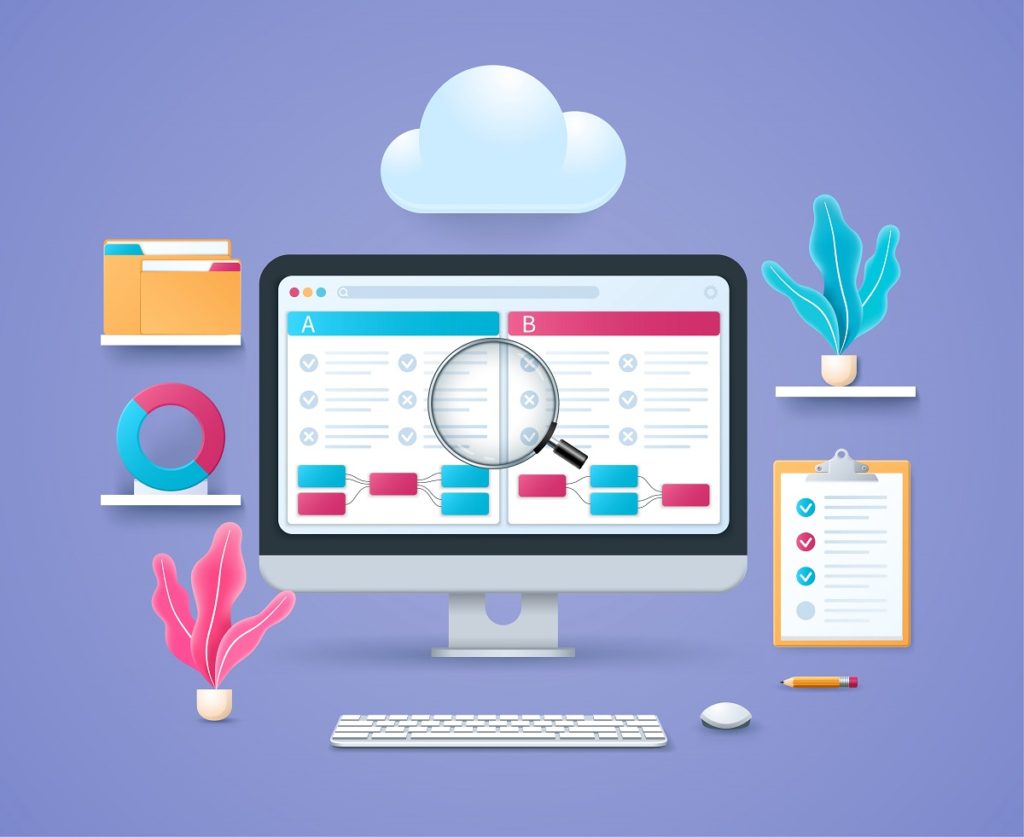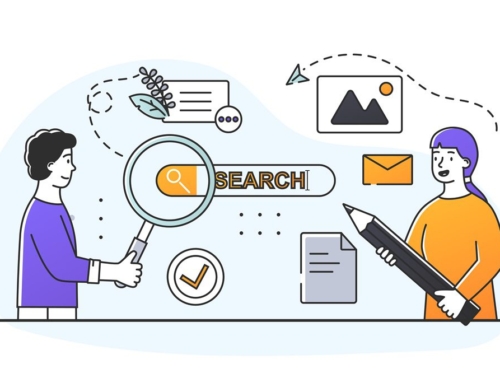A/B testing your marketing campaigns can help you gauge the effectiveness of specific elements to improve conversion rates. Paying close attention to the details and being willing to experiment are essential to achieving success with your digital marketing campaigns.

This is where A/B testing comes in. In marketing, A/B testing offers a way to optimize conversion rates by presenting two different versions of a piece of content to two equal-sized audience segments over a specified period to see which one performs better.
The data you gather from an A/B test will help you understand what resonates with your target audience and what doesn’t. This information will help you replicate what works on a larger scale with confidence, improve existing content, develop new high-performing content, and set and achieve new marketing goals.
The most common goals of A/B testing include increased website traffic, contact form submissions, subscriptions and purchases.
A/B testing is an important tool in a digital marketer’s toolbox but one that many marketers have not yet mastered.
A/B testing in marketing defined
A/B testing, also known as split testing, is a randomized process to compare the effectiveness of specific elements within a piece of content. These elements or variables are almost limitless. They can include layout, fonts, calls to action, titles, body copy, product photos, website navigation and more.
How A/B testing works
To execute an A/B test you have to create two versions of the same piece of content with changes to a single element or variable. Then, show these two versions to two different sample audiences of similar size. Run the test for a set period — make sure it’s a long enough time to ensure the accuracy of results — and analyze your findings to understand which performed better. For example, if Version A generates more click-through rates and conversions than Version B, you can use this information to drive maximum business results.
A/B tests can help enhance the impact of your website, social channels, blogs, videos, infographics, email and advertising campaigns — just about all marketing initiatives.
Tip: Tools such as Optimizely and Visual Website Optimizer allow you to run A/B tests on your website. And Facebook offers tools to A/B test video content on its platform.
Benefits of A/B testing
Employed and executed appropriately, A/B testing can lead to:
- improved user engagement;
- stronger content;
- reduced bounce rates;
- fewer abandoned carts;
- better conversion rates;
- increased sales;
- fast results; and
- easy analysis.
How to execute A/B testing
1. Determine what you want to test
Start by prioritizing low-performing content before looking to optimize what’s already working. Identify the variables that can be compared and their possible alternatives. Test each variable independently. Isolating and testing one variable at a time is the only way to measure its effectiveness. Remember, even a small change can lead to significant improvement.
2. Establish metrics
Once you know what you’ll be testing, establish metrics to evaluate performance. Align metrics to your business goals and think about how your audience might react to the changes you’re making and the outcome you want to see. Assess the results based on this hypothesis.
3. Build your alternative
Use the existing piece of content you’re evaluating, such as a web page, as the control scenario. Build an alternative web page with the new element you want to introduce. Maybe you want to add a review or a call to action, or perhaps you want to use a new font or color scheme. This altered page is the “challenger.”
4. Determine your audience sample size and randomly split them into equal groups
The right sample size is critical to ensure your results are accurate, reliable and statistically significant. Typically, the larger the sample size the better.
Tip: HubSpot offers a simple — and free — sample size calculator.
5. Set a time period for the A/B test
It is important to run one A/B test at a time and to show each of the versions to your sample audiences simultaneously and for the same length of time; not sequentially. This is the only way to prove causality. As a rule of thumb, it’s recommended to run an A/B test long enough to gain the insights from a full week of traffic. This will allow for changes in results due to the time of day and day of the week.
6. Analyze the results
While you’re likely evaluating multiple metrics, it’s important to prioritize your primary goal. Use an A/B testing calculator to measure the statistical significance of your results. Use what you’ve learned to optimize your content.
A little change can mean a lot. If you’re not A/B testing, you’re missing out on opportunities to increase conversions and grow your business.

